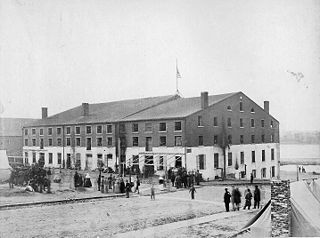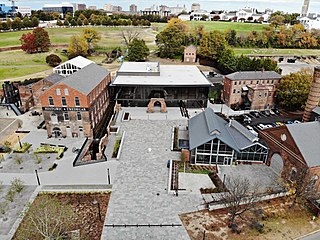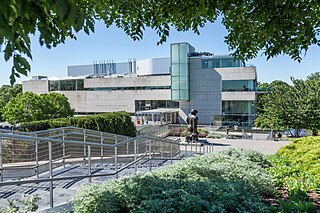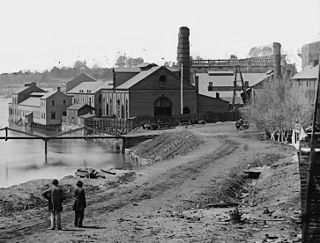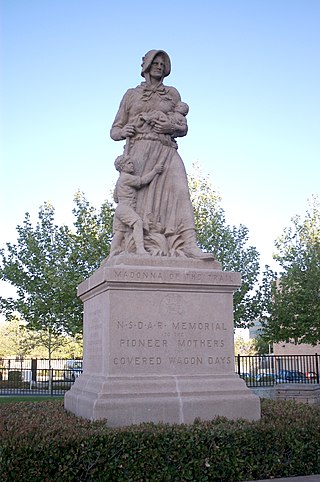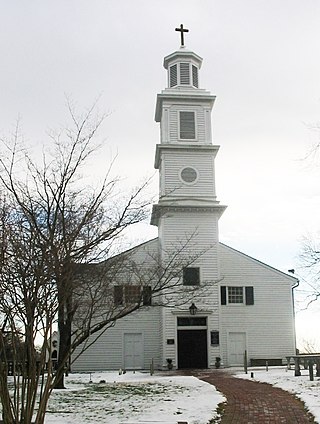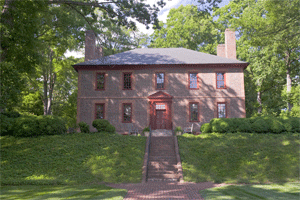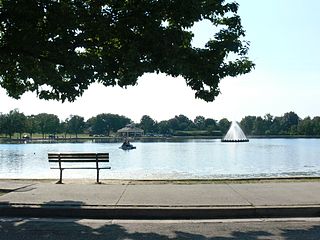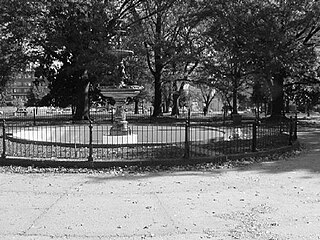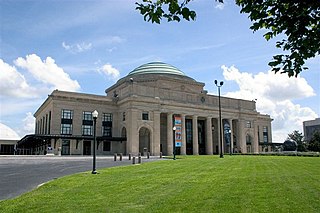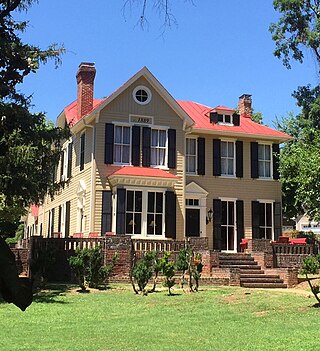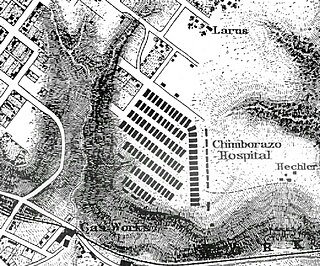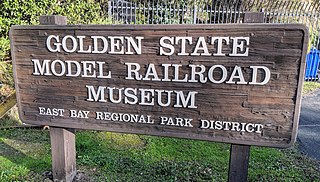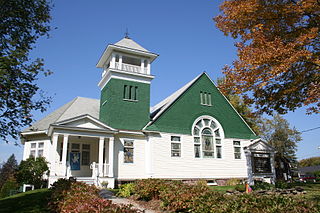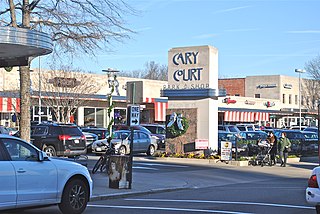21 Sights in Richmond, United States (with Map and Images)
Legend
Welcome to your journey through the most beautiful sights in Richmond, United States! Whether you want to discover the city's historical treasures or experience its modern highlights, you'll find everything your heart desires here. Be inspired by our selection and plan your unforgettable adventure in Richmond. Dive into the diversity of this fascinating city and discover everything it has to offer.
Sightseeing Tours in Richmond1. Libby Prison
Libby Prison was a Confederate prison at Richmond, Virginia, during the American Civil War. In 1862 it was designated to hold officer prisoners from the Union Army, taking in numbers from the nearby Seven Days battles and other conflicts of the Union's Peninsular campaign to take Richmond and end the war only a year after it had begun. As the conflict wore on the prison gained an infamous reputation for the overcrowded and harsh conditions. Prisoners suffered high mortality from disease and malnutrition. By 1863, one thousand prisoners were crowded into large open rooms on two floors, with open, barred windows leaving them exposed to weather and temperature extremes.
2. American Civil War Museum
The American Civil War Museum is a multi-site museum in the Greater Richmond Region of central Virginia, dedicated to the history of the American Civil War. The museum operates three sites: The White House of the Confederacy, the American Civil War Museum at Historic Tredegar in Richmond, and the American Civil War Museum at Appomattox. It maintains a comprehensive collection of artifacts, manuscripts, Confederate books and pamphlets, and photographs.
3. Virginia Museum of Fine Arts
The Virginia Museum of Fine Arts (VMFA) is an art museum in Richmond, Virginia, United States, which opened in 1936. The museum is owned and operated by the Commonwealth of Virginia. Private donations, endowments, and funds are used for the support of specific programs and all acquisition of artwork, as well as additional general support.
4. American Civil War Center at Tredegar
The Tredegar Iron Works in Richmond, Virginia, was the biggest ironworks in the Confederacy during the American Civil War, and a significant factor in the decision to make Richmond the Confederate capital.
5. C&O Church Hill Tunnel Western Portal
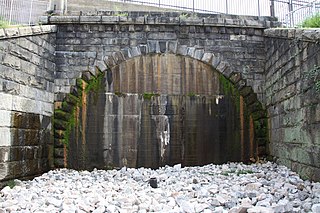
Church Hill Tunnel is an old Chesapeake and Ohio Railway (C&O) tunnel, built in the early 1870s, which extends approximately 4,000 feet under the Church Hill district of Richmond, Virginia, United States. On October 2, 1925, the tunnel collapsed on a work train, killing four men and trapping a steam locomotive and ten flat cars. Rescue efforts only resulted in further collapse, and the tunnel was eventually sealed for safety reasons.
6. Madonna of the Trail
Madonna of the Trail is a series of 12 identical monuments dedicated to the spirit of pioneer women in the United States. The monuments were commissioned by the National Society Daughters of the American Revolution (NSDAR) during the administration of President General Grace Lincoln Hall Brosseau. They were installed in each of the 12 states along the National Old Trails Road, which extended from Cumberland, Maryland, to Upland, California.
7. Agecroft Hall
Agecroft Hall is a Tudor manor house and estate located at 4305 Sulgrave Road on the James River in the Windsor Farms neighborhood of Richmond, Virginia, United States. The manor house was built in the late 15th century, and was originally located in the Irwell Valley at Agecroft, Pendlebury, then in the historic county of Lancashire, England, but by the 20th century it was unoccupied and in a state of disrepair.
8. Saint Johns Church
St. John's Church is an Episcopal church located at 2401 East Broad Street in Richmond, Virginia, United States. Formed from several earlier parishes, St. John's is the oldest church in the city of Richmond, Virginia. It was built in 1741 by William Randolph's son, Colonel Richard Randolph; the Church Hill district was named for it. It was the site of two important conventions in the period leading to the American Revolutionary War, and is famous as the location where American Founding Father Patrick Henry gave his memorable speech at the Second Virginia Convention, closing with the often-quoted demand, "Give me liberty, or give me death!" The church is designated as a National Historic Landmark.
Wikipedia: St._John's_Episcopal_Church_(Richmond,_Virginia) (EN)
9. Wilton House Museum
Wilton House Museum is a museum in a historic house located in Richmond, Virginia. Wilton was constructed c. 1753 by William Randolph III, son of William Randolph II, of Turkey Island. Wilton was originally the manor house on a 2,000-acre (8.1 km2) tobacco plantation known as "World's End" located on the north bank of the James River several miles east of the city of Richmond. Between 1747 and 1759, William III acquired more than a dozen contiguous tracts of land. About 1753, Randolph completed building a Georgian manor house, which he named "Wilton," on a site overlooking the river.
10. Byrd Park
Byrd Park, also known as William Byrd Park, is a public park located in Richmond, Virginia, United States, north of the James River and adjacent to Maymont. The 287-acre (1.16 km2) park includes a mile-long trail with exercise stops, monuments, an amphitheatre, and three small lakes: Shields, Swan, and Boat Lake. Boat Lake has a lighted fountain at its center. Visitors can rent pedal boats there in season. The park includes tennis courts, Little League baseball fields, and a children's playground. The historic round house and Poplar Vale Cemetery are also located in the park. It is named after William Byrd II, whose family owned much of the area when Richmond was founded in 1737. The park was listed on the National Register of Historic Places in 2016.
11. Monroe Park
Monroe Park is a 7.5 acres (3.0 ha) landscaped park 1 mile (1.6 km) northwest of the Virginia State Capitol Building in Richmond, Virginia. It is named after James Monroe, the fifth president of the United States (1817–1825). The park unofficially demarcates the eastern point of the Fan District and is Richmond's oldest park. It occupies the center of the Virginia Commonwealth University Monroe Park Campus.
12. Virginia Holocaust Museum
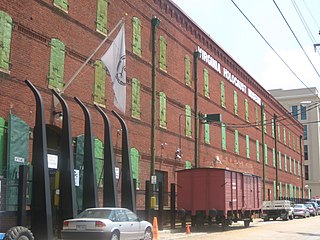
The Virginia Holocaust Museum (VHM) is a public history museum located in Richmond, Virginia, United States. The museum is dedicated to depicting the Holocaust through the personal stories of its victims.
13. Science Museum of Virginia
The Science Museum of Virginia is a science museum located in Richmond, Virginia. Established in 1970, it is an agency of the Commonwealth of Virginia. It is housed in the former Broad Street Station, built in 1917.
14. Marburg
Marburg is a historic home located in the Carillon/Byrd Park area of Richmond, Virginia. It is the oldest standing residence in this area of Richmond, predating nearby Maymont by 4 years. The house was slated for demolition in 2013 to make way for 6 new homes but was saved by an ardent group of preservationists and the Historic Richmond Foundation. The redesigned development will now incorporate and encircle the existing house. An exterior restoration was completed in 2015 returning the house to its original colors after being stark white for many years. The barn red roof color was also restored. Two antebellum structures survive on this property: a 2-room servant cottage and a kitchen, both of which pre-date the house itself by over 30 years. As of February 2021, the house and dependencies have been repainted white with green shutters and roof, retaining a classic feel amongst the newer homes built around it.
15. Chimborazo Medical Museum
Chimborazo Hospital was a Civil War-era facility built in Richmond, Virginia to service the medical needs of the Confederate Army. It functioned between 1862 and 1865 in what is now Chimborazo Park, treating over 76,000 injured Confederate soldiers. During its existence, the hospital admitted nearly 78,000 patients and between 6,500 and 8,000 of these patients died. This mortality rate of between 8.3 and 10.3 percent is among the lowest such rates of period military hospitals.
16. Old Round Church
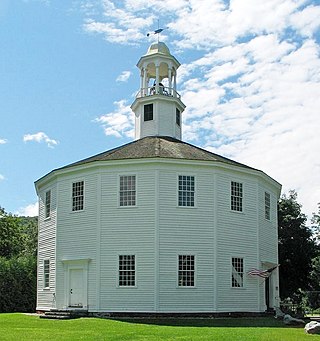
The Round Church, also known as the Old Round Church, is a historic church on Round Church Road in Richmond, Vermont. Built in 1812–1813, it is an extraordinarily rare, well-preserved example of a sixteen-sided meeting house, likely the only remaining example of its kind in North America; the only other known definitively sixteen-sided building in the Northeastern United States is Union College's Nott Memorial. It was built to serve as the meeting place for the town as well as five Protestant congregations. Today, it is maintained by the Richmond Historical Society and is open to the public during the summer and early fall. It is also available for weddings and other events. It was declared a National Historic Landmark in 1996 for the rarity of its form and its exceptional state of preservation.
Wikipedia: Round Church (Richmond, Vermont) (EN), Heritage Website
17. Golden State Model Railroad Museum
The Golden State Model Railroad Museum is an operating model railroad exhibit located in Point Richmond, California, within the boundary of the Miller/Knox Regional Shoreline park. It is located in the Brickyard Cove area and features dozens of realistic city and country scenes, with trains from different eras running on several layouts in different scales. It is on the US National Register of Historic Places.
18. Brown's Island
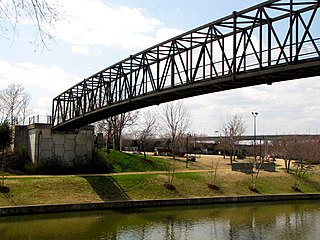
Brown's Island is an artificial island on the James River in Richmond, Virginia, formed by the Haxall Canal. Part of the city's James River Park, it is the popular venue of a large number of outdoor concerts and festivals in the spring and summer, such as the weekly Friday Cheers concert series or Dominion Riverrock. The Rivanna Subdivision Trestle crosses over the island.
19. Central National Bank Building
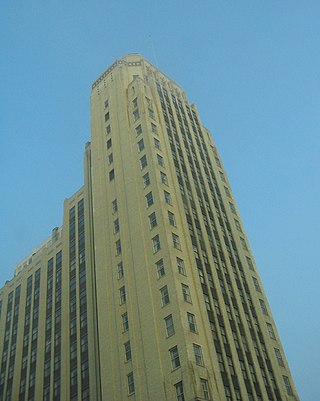
The Central National Bank building is a 23-story Art Deco skyscraper located in Richmond, Virginia. Completed in 1929, it was one of the first skyscrapers in the city of Richmond not in the heart of the financial district. According to architectural historian Richard Guy Wilson, it and the West Hospital building, are the only two skyscrapers in Richmond to have used the fashionable Art Deco ziggurat-inspired setback, and only a few others exist elsewhere in Virginia. When the bank later changed hands, it was known as the Central Fidelity Bank. It was used as a branch bank for Wachovia Corp. until that closed in 2000. After nearly fifteen years of vacancy, it was converted into apartments, and the first resident moved into the building in mid-2016. The redevelopment is called to "Deco at CNB," a 200-apartment development by Douglas Development Corp.
20. Richmond Congregational Church
The Richmond Congregational Church is a historic church at 20 Church Street in Richmond, Vermont, United States. Built in 1903-04, it is a significant local example of Colonial Revival architecture, designed by prominent Vermont architect Walter R. B. Willcox. It was listed on the National Register of Historic Places in 2001. The congregation is affiliated with the United Church of Christ; the minister is Rev. Katelyn Macrae.
Wikipedia: Richmond Congregational Church (EN), Heritage Website
21. Cary Street Park and Shop Center
Cary Street Park and Shop Center, also known as the Cary Court Shopping Center, is a historic shopping center developed by the C.F. Sauer family in the Carytown district of Richmond, Virginia. It was built in 1938 in the Art Deco style. Two rectangular wings to the west and east were completed in 1949 and 1951. The structure is essentially a one-story structure in the shape of an elongated "U" and constructed of brick, granite, limestone and marble veneer. It features a prominent parking area, an uninterrupted string of large modern aluminum and glass doors and commercial storefront windows, a stepped limestone parapet, curved windows, and a low, projecting stucco canopy.
Share
How likely are you to recommend us?
Disclaimer Please be aware of your surroundings and do not enter private property. We are not liable for any damages that occur during the tours.
